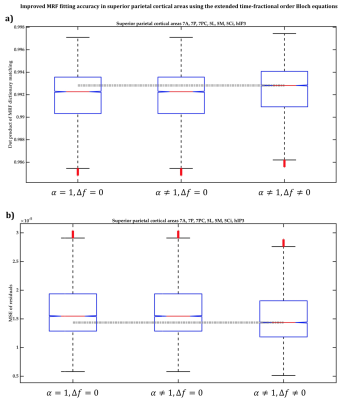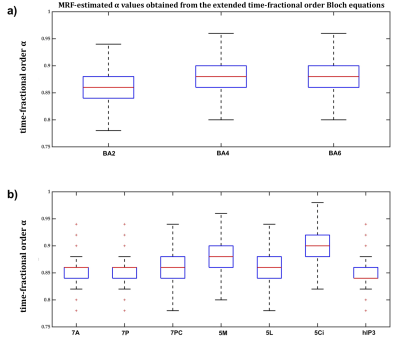Shahrzad Moinian1,2, David Reutens1,2, and Viktor Vegh1,2
1Centre for Advanced Imaging, The University of Queensland, Brisbane, Australia, 2ARC Training Centre for Innovation in Biomedical Imaging Technology, The University of Queensland, Brisbane, Australia
1Centre for Advanced Imaging, The University of Queensland, Brisbane, Australia, 2ARC Training Centre for Innovation in Biomedical Imaging Technology, The University of Queensland, Brisbane, Australia
The additional parameters of the extended time-fractional
order Bloch equations improve MRF dictionary fitting accuracy. Anomalous
relaxation models may be used to derive additional information useful for more accurate
parcellation of the cerebral cortex in individuals.

Figure 3 MRF dictionary matching accuracy between
classical monoexponential Bloch equations (left box), Magin et al model (middle
box), and extended Bloch equations (right box) in cortical aeras 7A, 7P, 7PC,
5L, 5M, 5Ci, and hIP3 was compared using a) dot product of the actual and best
matching MRF signals, and b) mean squared error of MRF residuals. Note that
outliers more than three median absolute deviations (MAD) are removed.
